

Founded in 2001, the Research Center of Classic Performing Arts (RCCPA) of Kobe Women’s University is located at our Sannomiya Campus Education Center, the original site of the Yukiyoshi Institute, where it houses a wide range of archival material on Medieval Arts (Noh and Kyogen), Early Modern Arts (Kabuki and Joruri), and Folk Performing Arts.
RCCPA’s collection provides general and wide-ranging information on these Japanese classic performing arts; it also holds programs open to the public aiming to contribute to scholarship across a variety of fields.
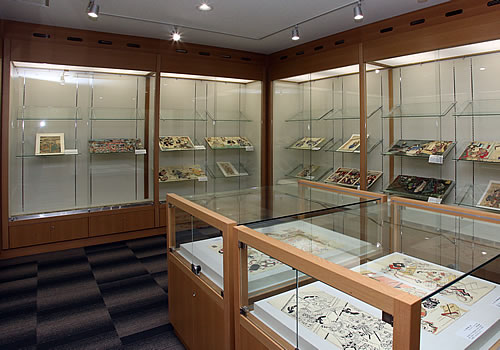
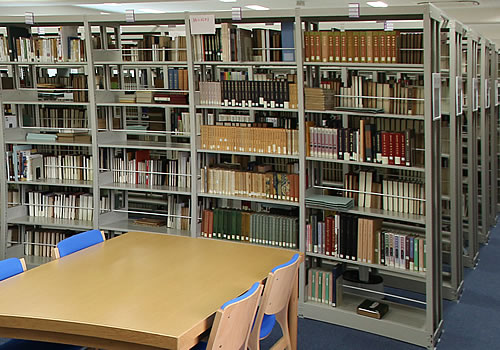
RCCPA houses a rich repository of research materials on Japanese classic performing arts, including bound books both in Japanese and Western style, journals, photographic records, performance programs, audiovisual materials, and photographs.
The Tachibana Bunko Collection was donated to the Center in March 1994 by the late Toyoaki Tachibana, at the time secretary-general of the Organization for Noh Appreciation of Osaka, and formed the core for the Center for Noh Study, the precursor of the present RCCPA. It consists mainly of books bound in Western style and journals on Noh which belonged to Tachibana and the Organization for Noh Appreciation of Osaka.
The Organization for Noh Appreciation of Osaka worked to popularize and to spread the understanding of Noh and Tachibana’s hope was to establish a research institute for Noh in the Kansai area. The breadth of materials—from introductory books to professional and technical books on Noh—related fields including fine arts and history—reflects Tachibana’s aim to found such a research center.
Donated in October 2000 by the Yoshida family of Nagahama in Shiga Prefecture, this collection consists mainly of Kamigakari Gohyakuban Utaibon (500 Noh chants) copied in the Edo period, Utai Nayose (anthology of Noh chant titles), Shimaitsuke (choreography scripted by Shiokoji Mitsutsura).
Donated in August 2001 by the Hinoki Shoten, the book shop specializing in Utaibon founded in Kyoto in 1695. It consists mainly of thwacking boards or blocks for printing Utaibon and Ko-Utaibon of the Kanze and Kongo schools of Noh which were in actual use as stage scripts to the end of the Meiji era. It provides information concerning how Utaibon were published around the Bakumatsu (end of the Edo) era and in the Meiji era. Images of both the thwacking boards and their reversed images are available in the database of this collection.
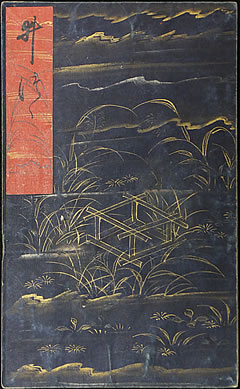
Horike Soshitsu Utaibon Izutsu
Donated in March 2010 by the late Masayoshi Ito, Professor Emeritus of Kobe Women’s University, first director of RCCPA. A scholar of Noh and medieval literature, Ito collected material specifically on Noh as well as Japanese medieval literature. His philological approach covered and extended into research in history, literature and thought in relation to and in explanation of the world of Utai and Noh. Numerous Noh and Kyogen performance programs are available in the database owned by RCCPA.
In June 2012, this collection was donated by Katsumi Kano, director of the Institute of Puppet Performing Art History in Nagoya. It consists mainly of material on Ningyo Joruri and puppet heads which Kano has collected from throughout Japan. The contents are wide-ranging, including a list of puppet heads documented by Kano and duplicates of document sources on puppets.
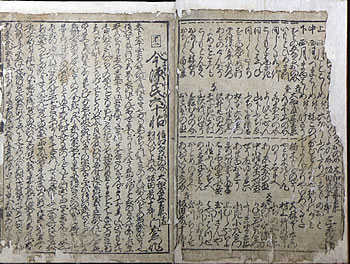
Ima Genji Rokuju-jo
This collection was donated to the center in September 2012 by Jun-ichi Shinoda, Professor Emeritus of Kobe Women’s University. A scholar of early modern drama and literature, Shinoda collected not only books on early modern drama such as Joruri and Kabuki, but also books on early modern literature including Kyoka-bon and Kyoka-tanzaku, as well as works on Buddhism and woodblock prints to explain Buddhism and Shinto. Consisting of books bound in both Japanese and Western styles, journals, catalogues and more, this collection forms the core of the entire collection on early modern performing arts.
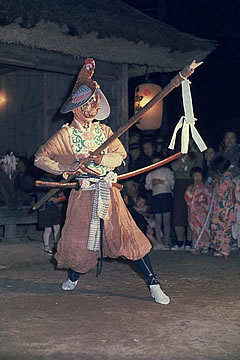
Autumn Festival Ryonsan at the Kami-Kamogawa Sumiyoshi Shrine 1960
In 1992, the Kita Bunko collection was donated by Keiji Kita who, as a scholar of folk performing arts, conducted much fieldwork and collected a large amount of material over many years. They include (1) slides, color negatives, and monochrome negatives of photographs of performance events taken all over Japan, (2) developed photographs, and (3) Kita’s own research notes. His fieldwork started in the 1950s and continued into the 1980s, during which time he covered the whole of Honshu, Shikoku and Kyushu. This collection is available in the database of Folk Performing Arts Materials of the Kita Bunko Collection.
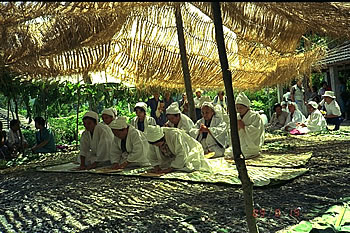
Unjami Shioya 1984
In 2002 the Okinawan Religious Services Collection was donated by the research group studying the regional culture of Okinawa affiliated to Konan University. This collection consists of research materials of 33 religious rites in Okinawa found in field surveys conducted between 1978 and 1998; they can be classified into 28 categories of rites. The surveyed area encompasses Iheya-jima Island in the north, Hateruma-jima Island to the south, and Iriomote-jima Island to the west. This collection can be accessed through the Okinawan Religious Services Database.
On-site access is available to all visitors to the Center to read books, journals, and other materials. Borrowing is not permitted.
Reference room within the Center.
Monday through Friday 10:00-17:00
*Closed on National Holidays, Founding Day of Kobe Women’s University, and some other days.
On-line searches can be made for books, journals, and other materials. For rare books and special collections, inquiries to the Center must be made in advance.

Around 15 minutes on foot to the north from JR Sannomiya, Hankyu Kobe Sannomiya, Hanshin Kobe Sannomiya, and Kobe City Subway Sannomiya stations.
Research Center of Classic Performing Arts
2nd Floor, Sannomiya Campus Education Center Kobe Women’s University
23-1 Nakayamate-dori 2-chome
Chuo-ku, Kobe 650-0004
FAX: +81- 78-231-1211
Email: kwu-rc@yg.kobe-wu.ac.jp
URL: http://www.yg.kobe-wu.ac.jp/geinou/